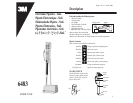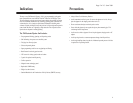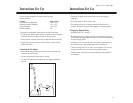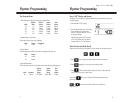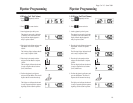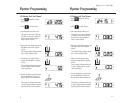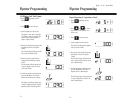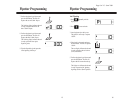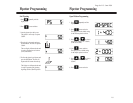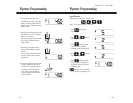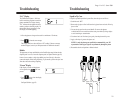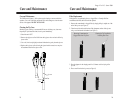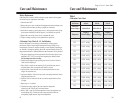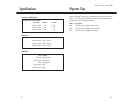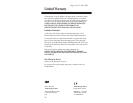
Care and Maintenance
26
1:5 Dilution
Test Volume> 4.00 mL 1.00 mL 5.00 mL
Volume (mL)
Tolerance
Range > 3.968-4.032 mL 0.979-1.021 mL 4.945- 5.055 mL
Weight (g) Weight (g) Weight (g)
Temperature Tolerance Range* Tolerance Range* Tolerance Range*
19°C 3.9585 - 4.0207g 0.9767 - 1.0181g 4.9332 - 5.0409g
20°C 3.9577 - 4.0199g 0.9765 - 1.0179g 4.9322 - 5.0399g
21°C 3.9569 - 4.0191g 0.9763 - 1.0177g 4.9312 - 5.0389g
22°C 3.9557 - 4.0179g 0.9760 - 1.0174g 4.9297 - 5.0374g
23°C 3.9549 - 4.0171g 0.9758 - 1.0172g 4.9287 - 5.0364g
24°C 3.9542 - 4.0163g 0.9756 - 1.0170g 4.9278 - 5.0354g
25°C 3.9530 - 4.0151g 0.9753 - 1.0167g 4.9263 - 5.0339g
26°C 3.9522 - 4.0139g 0.9751 - 1.0164g 4.9253 - 5.0324g
27°C 3.9510 - 4.0131g 0.9748 - 1.0162g 4.9238 - 5.0314g
28°C 3.9498 - 4.0119g 0.9745 - 1.0159g 4.9224 - 5.0299g
29°C 3.9487 - 4.0107g 0.9742 - 1.0156g 4.9209 - 5.0283g
30°C 3.9475 - 4.0099g 0.9739 - 1.0154g 4.9194 - 5.0273g
Table 1
Calibration Check Chart
* Weights adjusted for temperature and pressure effects using the “z factor”.
Care and Maintenance
25
Battery Replacement
If the battery does not hold a sufficient charge for proper operation of the pipettor,
follow these steps for replacement of the battery.
1. Switch the unit "OFF".
2. Remove the top two screws on the back of the pipettor and remove the battery cover.
3. Carefully remove the battery by lifting it straight out of the holder.
4. Install the new battery by pressing the positive (+) end against the contact spring
at the bottom of the holder. Guide the negative (-) end carefully into position.
5. Replace the cover and the screws. Do not overtighten the screws.
6. Dispose of battery according to local requirements or regulations.
Calibration Check (Mode d1, 1:5, 5mL dilution)
Genuine 3M Pipettor Tips are strongly recommended for verifying pipettor
performance. Perform a single-sample measurement following a change of any
removable parts. Perform a 4-sample test monthly–or more frequently, depending on
use. Perform a 10-sample test quarterly. Record all results and maintain records. Use
the procedure indicated in “Standard Methods for the Examination of Dairy Products.”
1. The pipettor, pipettor tips and test liquid should all be allowed to adjust to room
temperature (19°C-25°C) for one day before beginning the calibration check.
Note the temperature before starting.
2. Double-rinse the pipettor tip by aspirating water to the 5.0 mL level (4.0mL +
1.0mL) and then expelling it.
3. Place a 50mL or smaller vessel containing 20-25g of distilled water onto an
analytical balance. Note its weight. Re-tare balance to 0 (zero).
4. Aspirate 4.0mL of water from the vessel on the analytical balance. Note its
weight. Re-tare balance to 0.
5. Aspirate an additional 1.00 mL from the vessel on the analytical balance. Note its
weight. Re-tare balance to 0.
6. Expel the 5.0mL of water back into the vessel on the analytical balance. Note
its weight.
7. Repeat steps 4 - 6 as desired.
8. Calculate the average weight of the 4.0mL aspirations. Repeat this
calculation for the 1.00 mL and 5.0mL measurements.
9. Refer to Table 1, page 26. Find the temperature closest to the temperature you
recorded during step 1. Confirm that each average weight falls within the
corresponding weight tolerance range for that temperature.
Page 13 of 15 - June 2001



